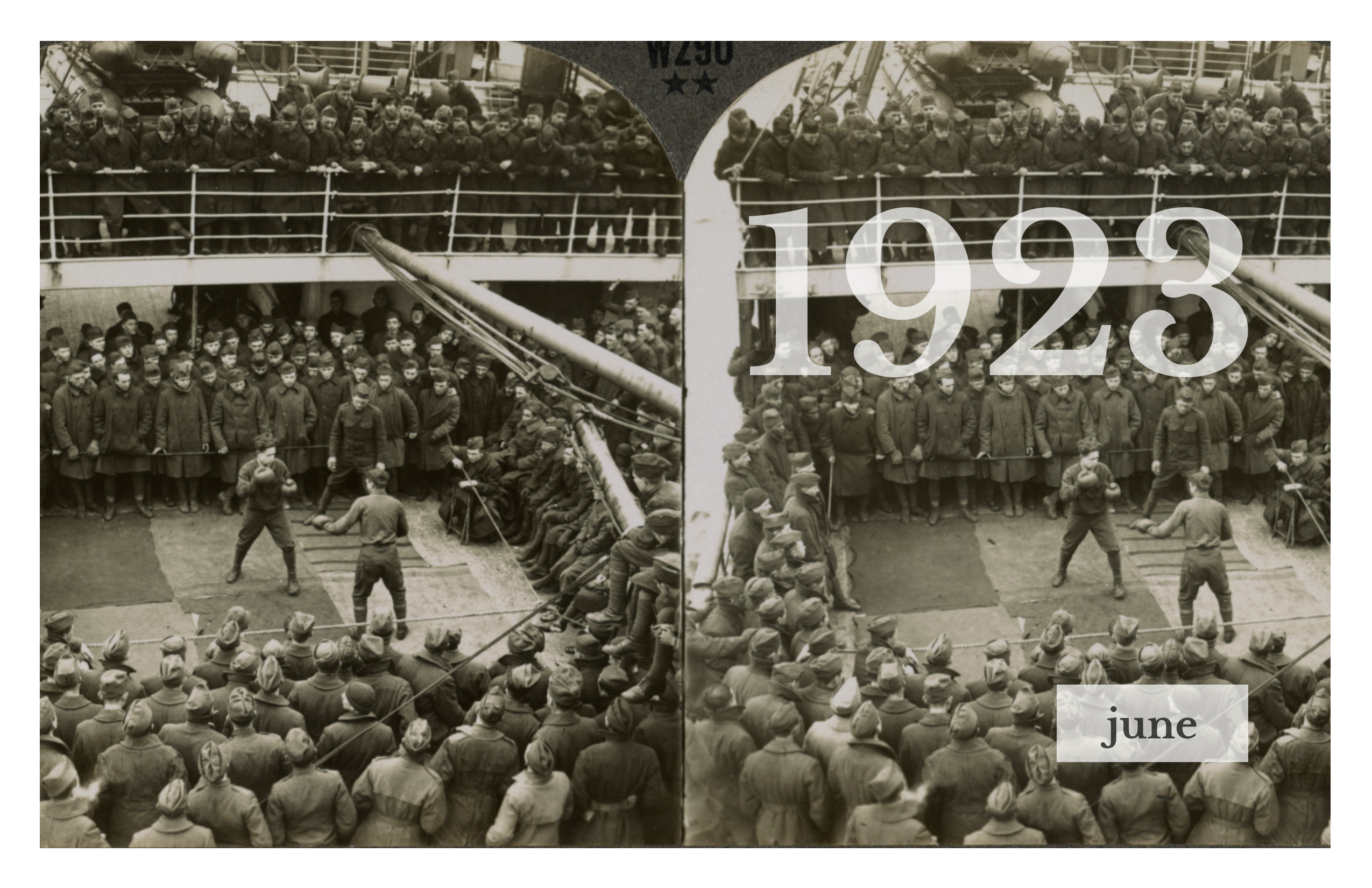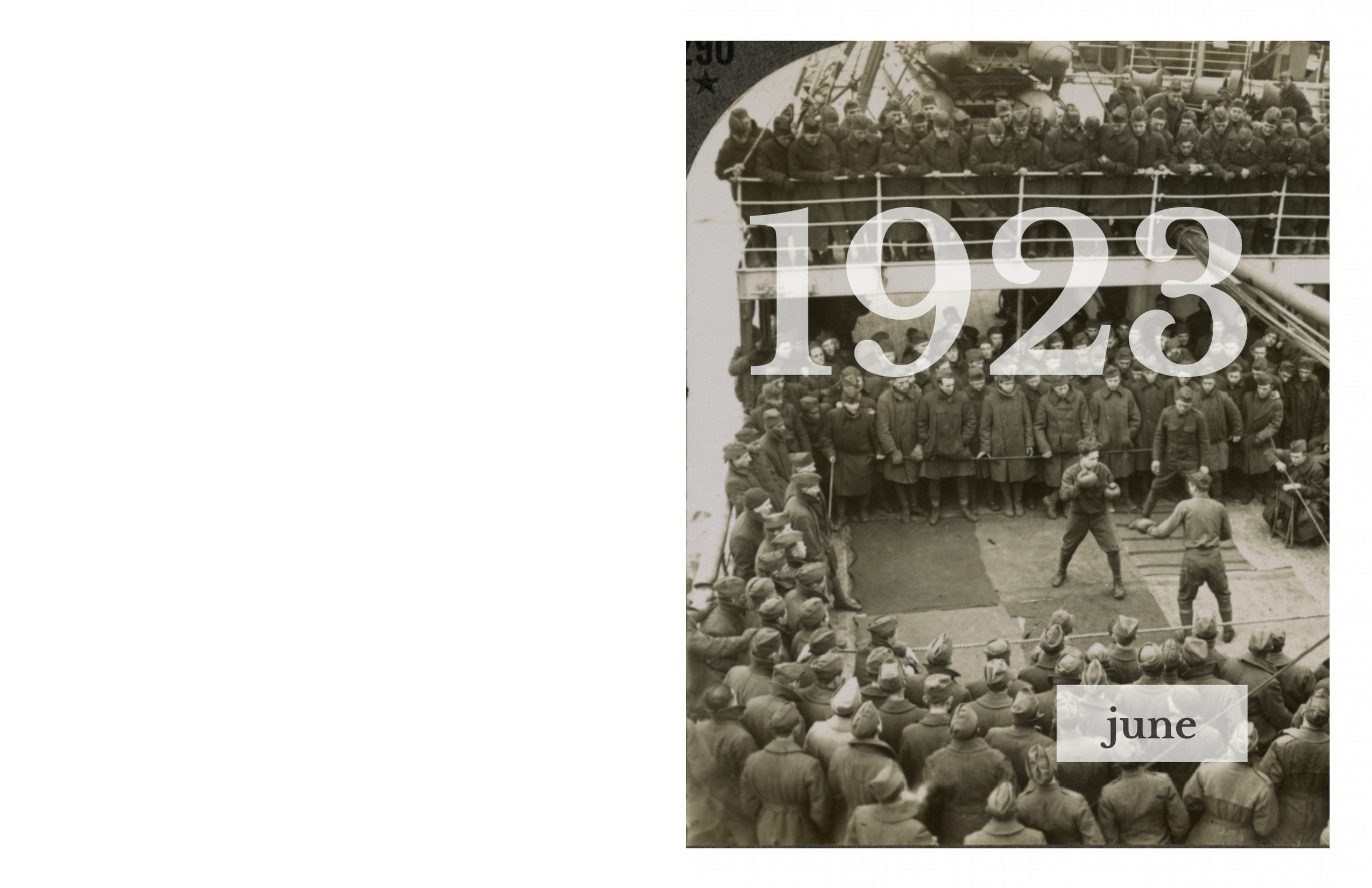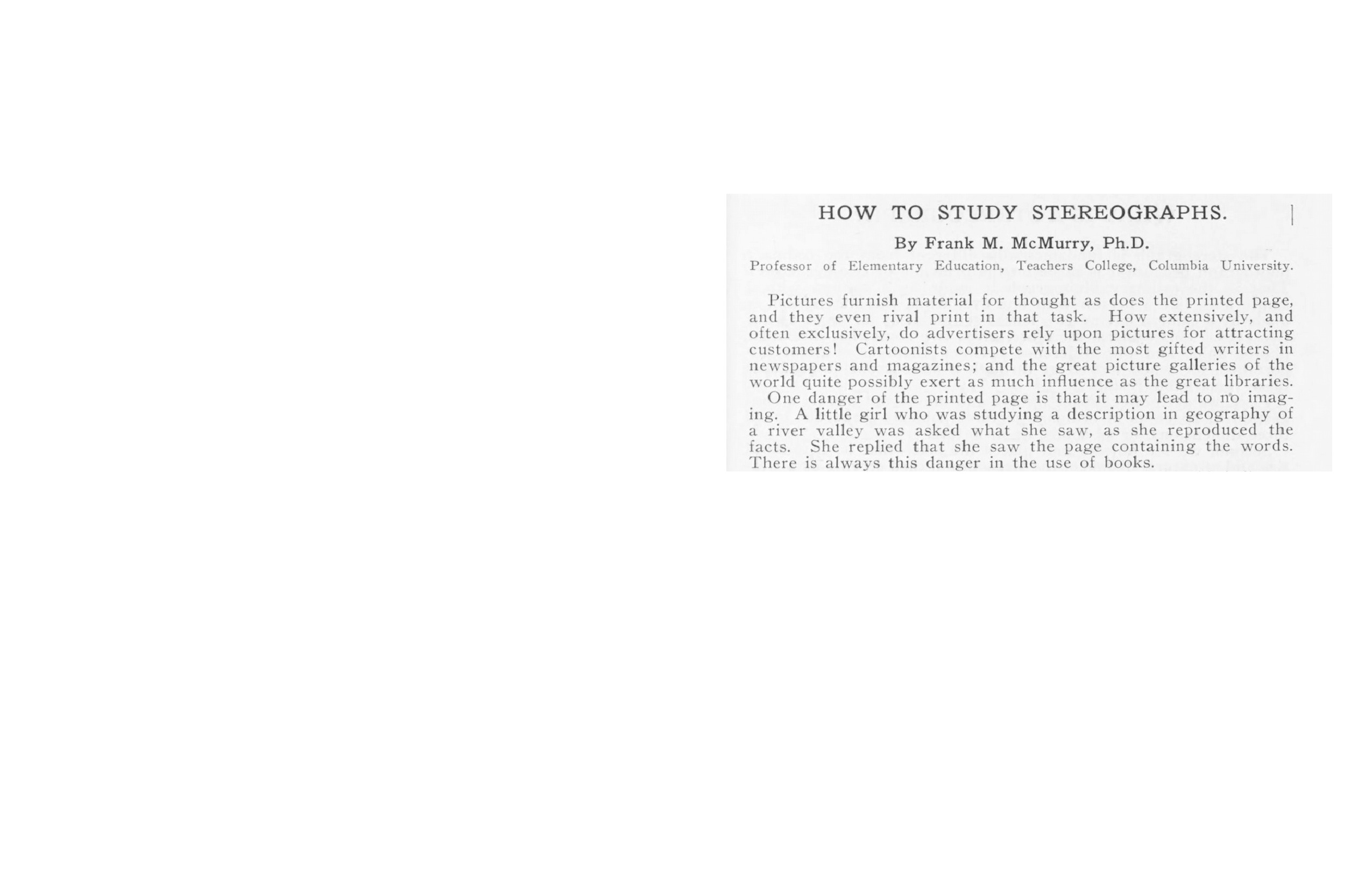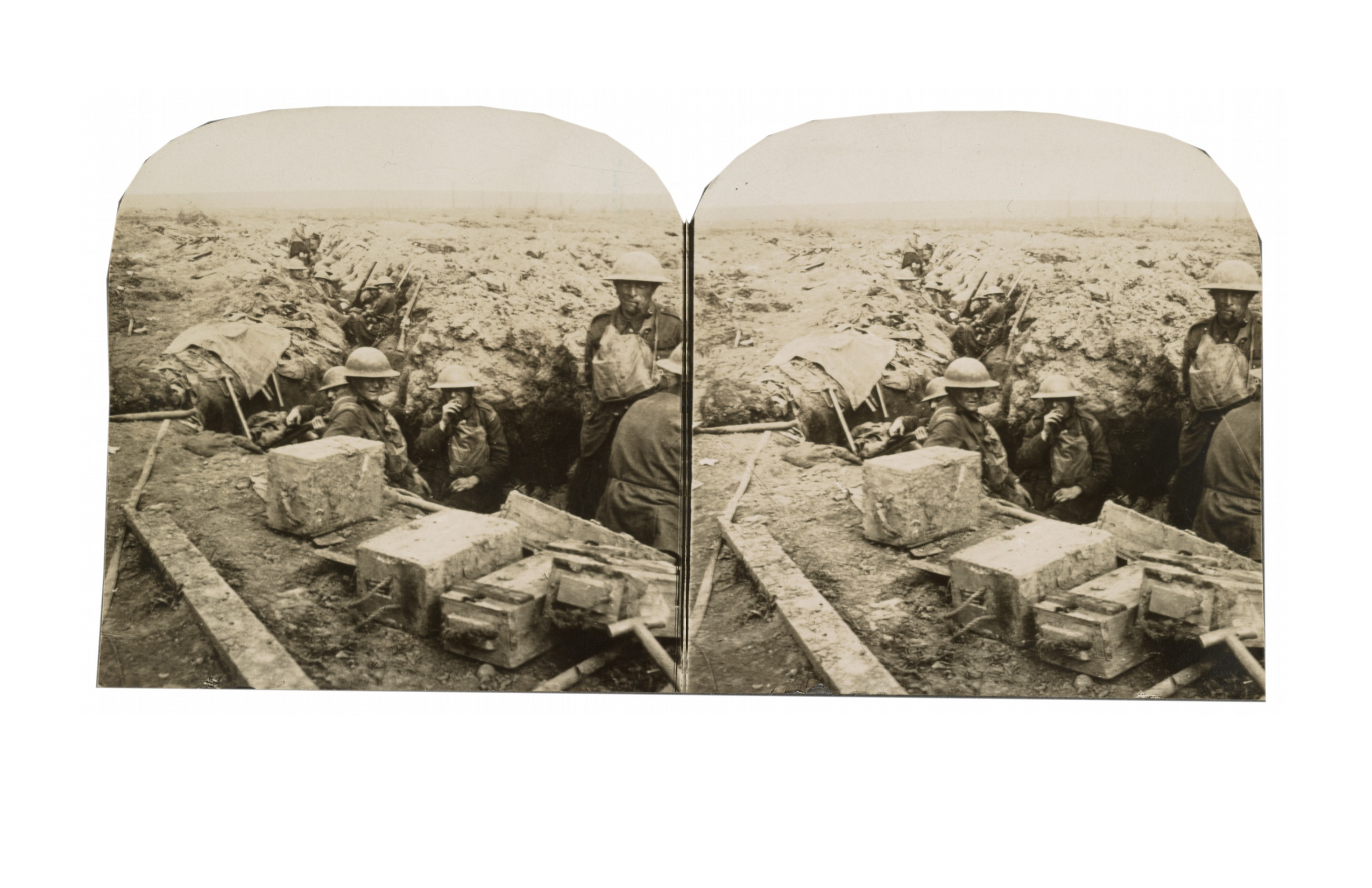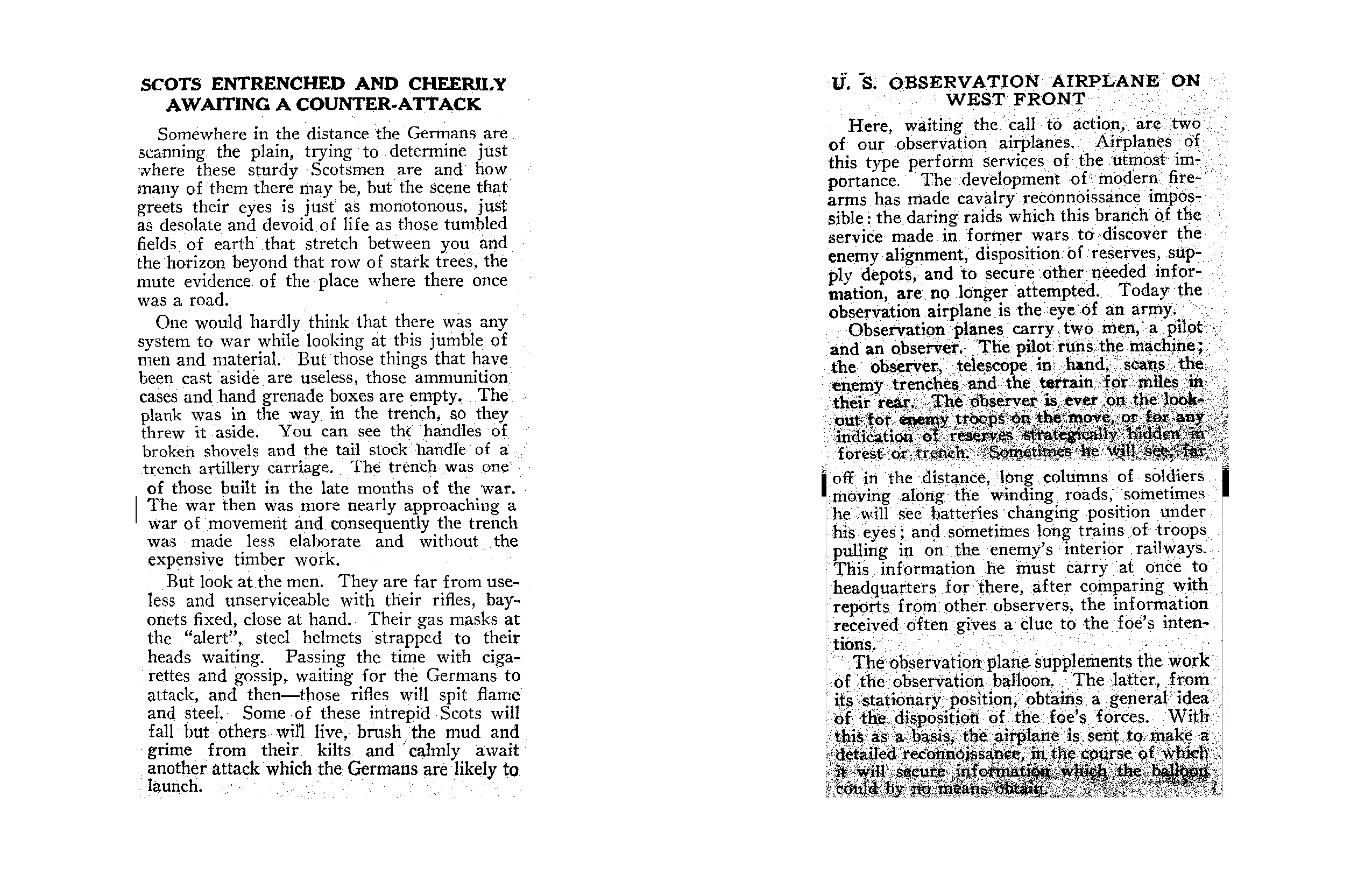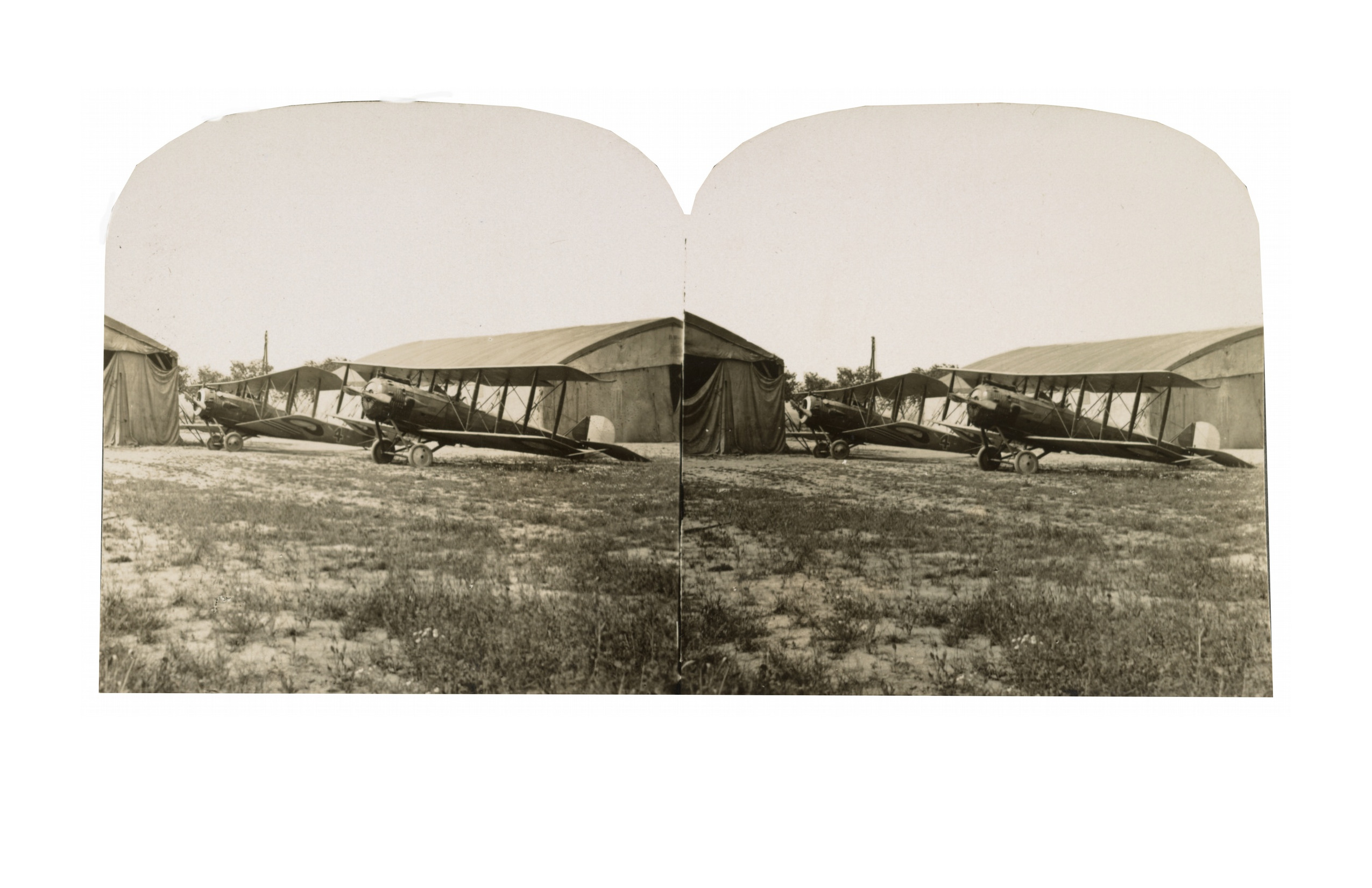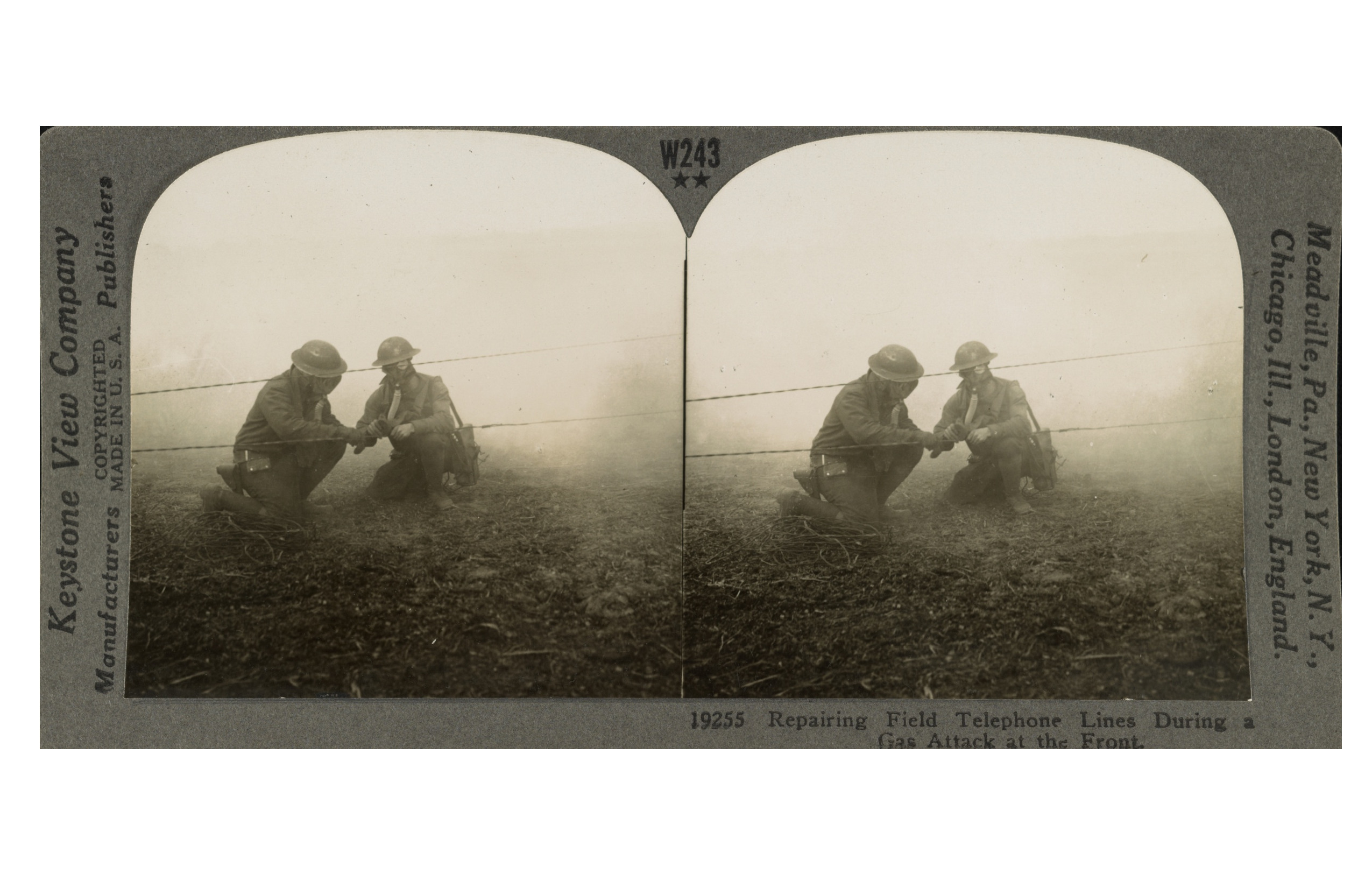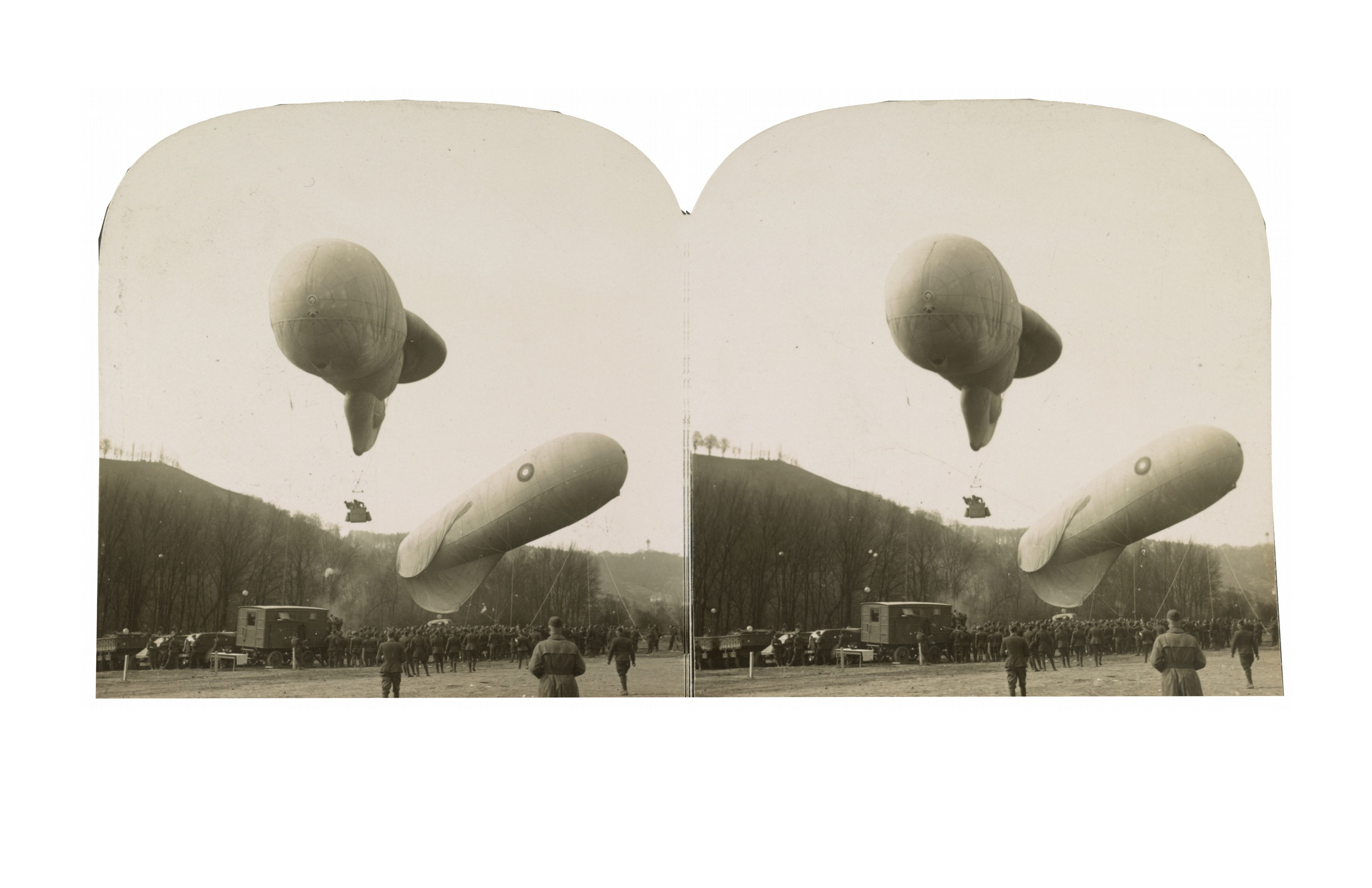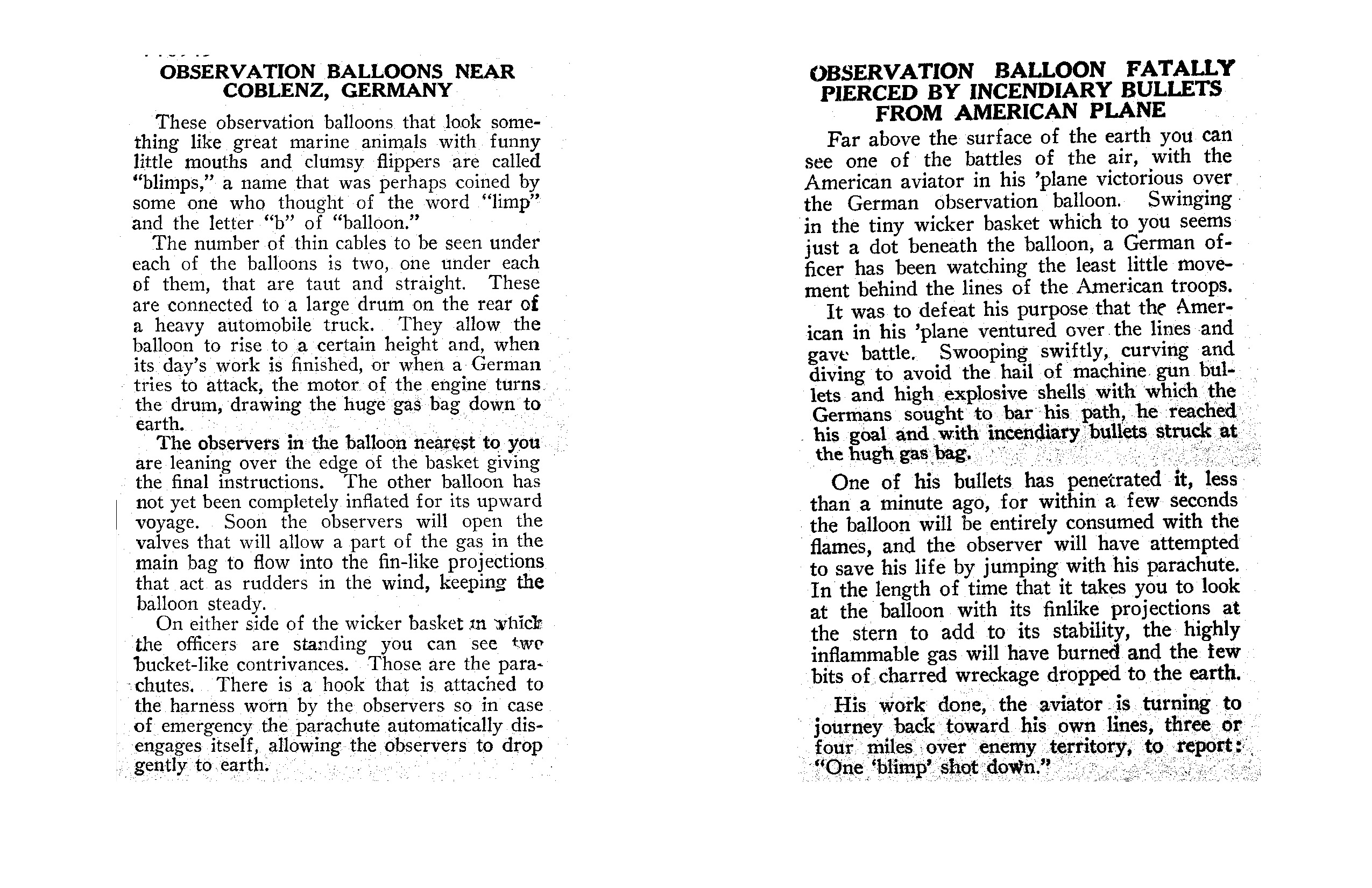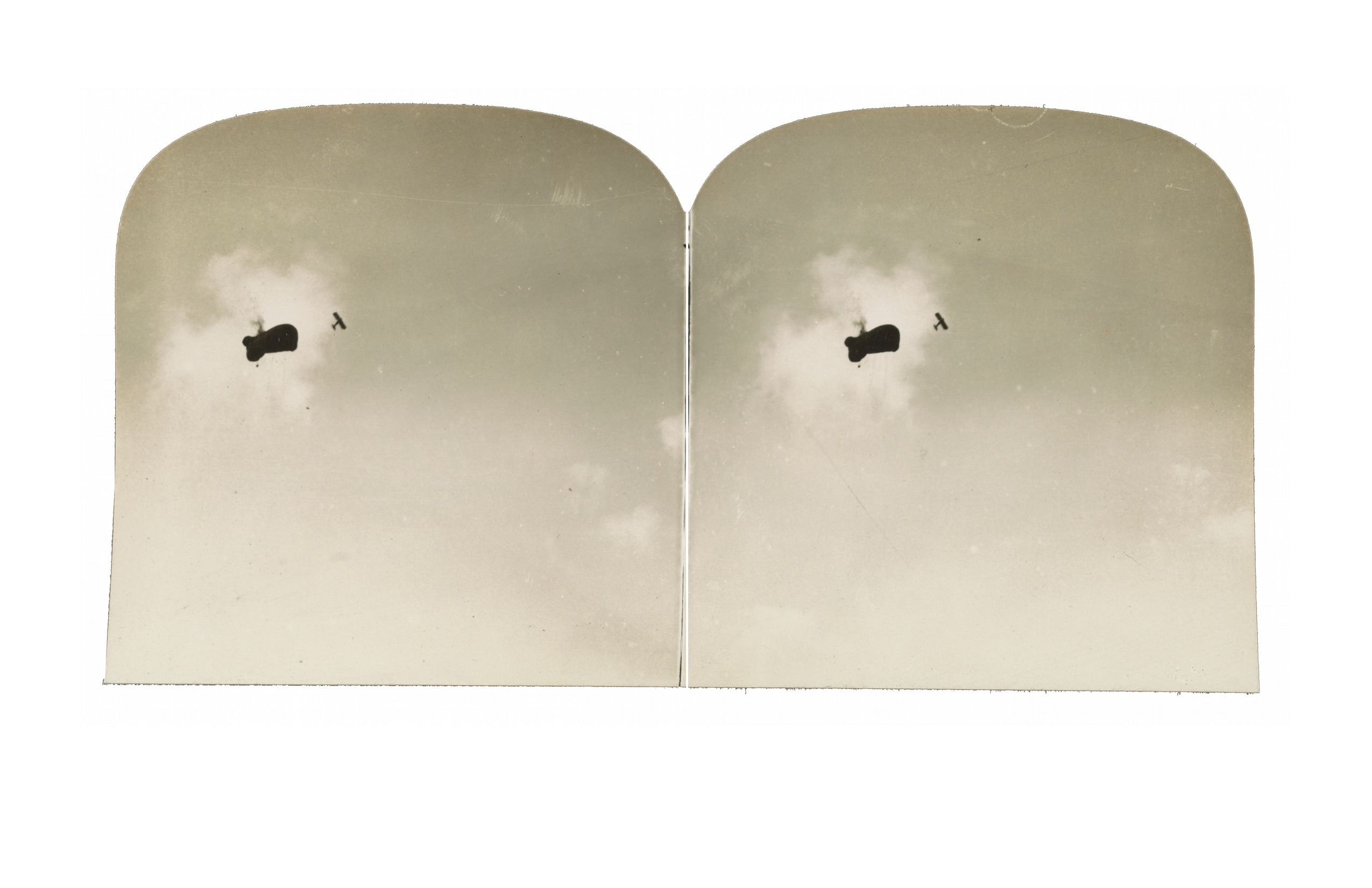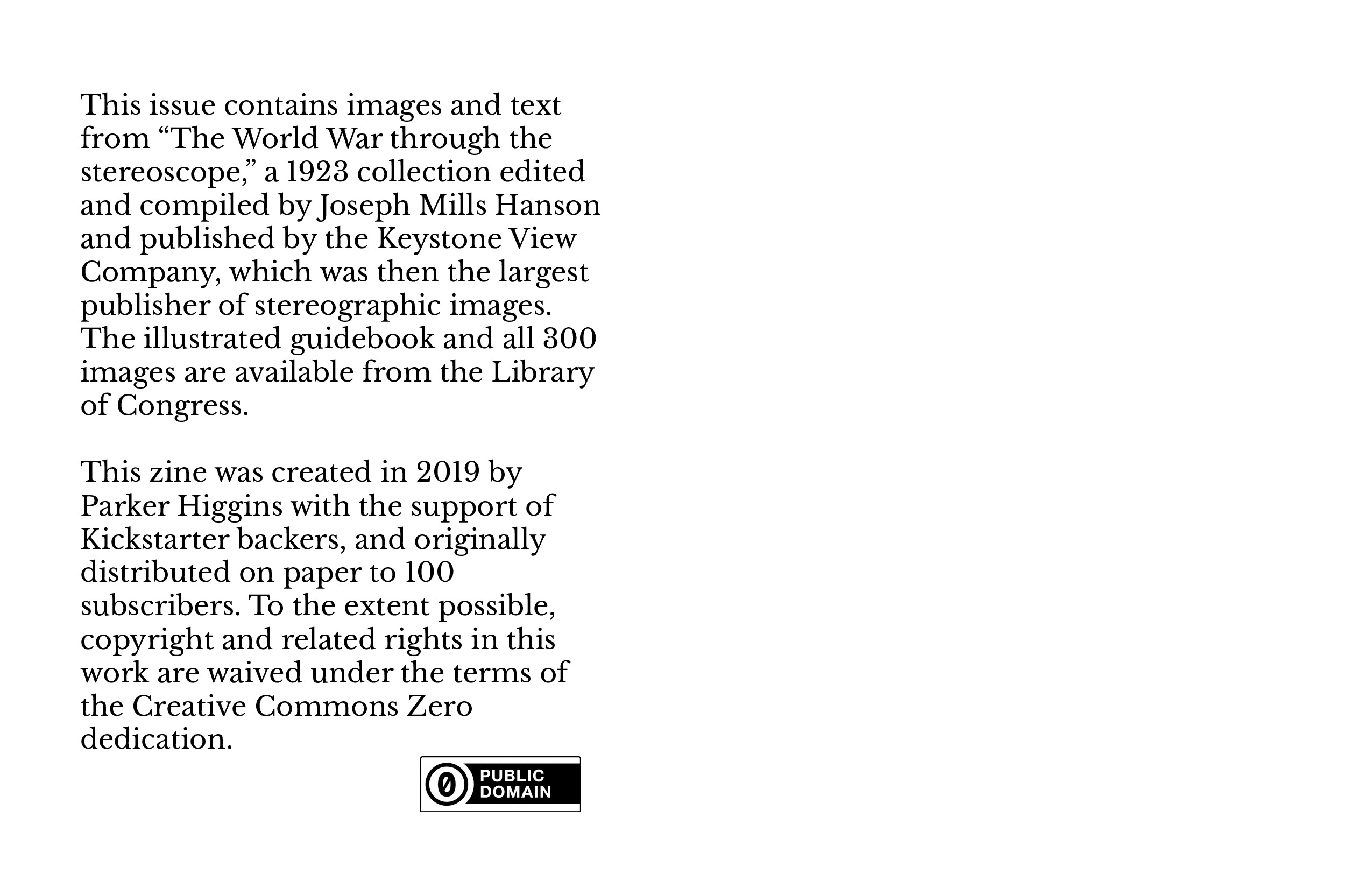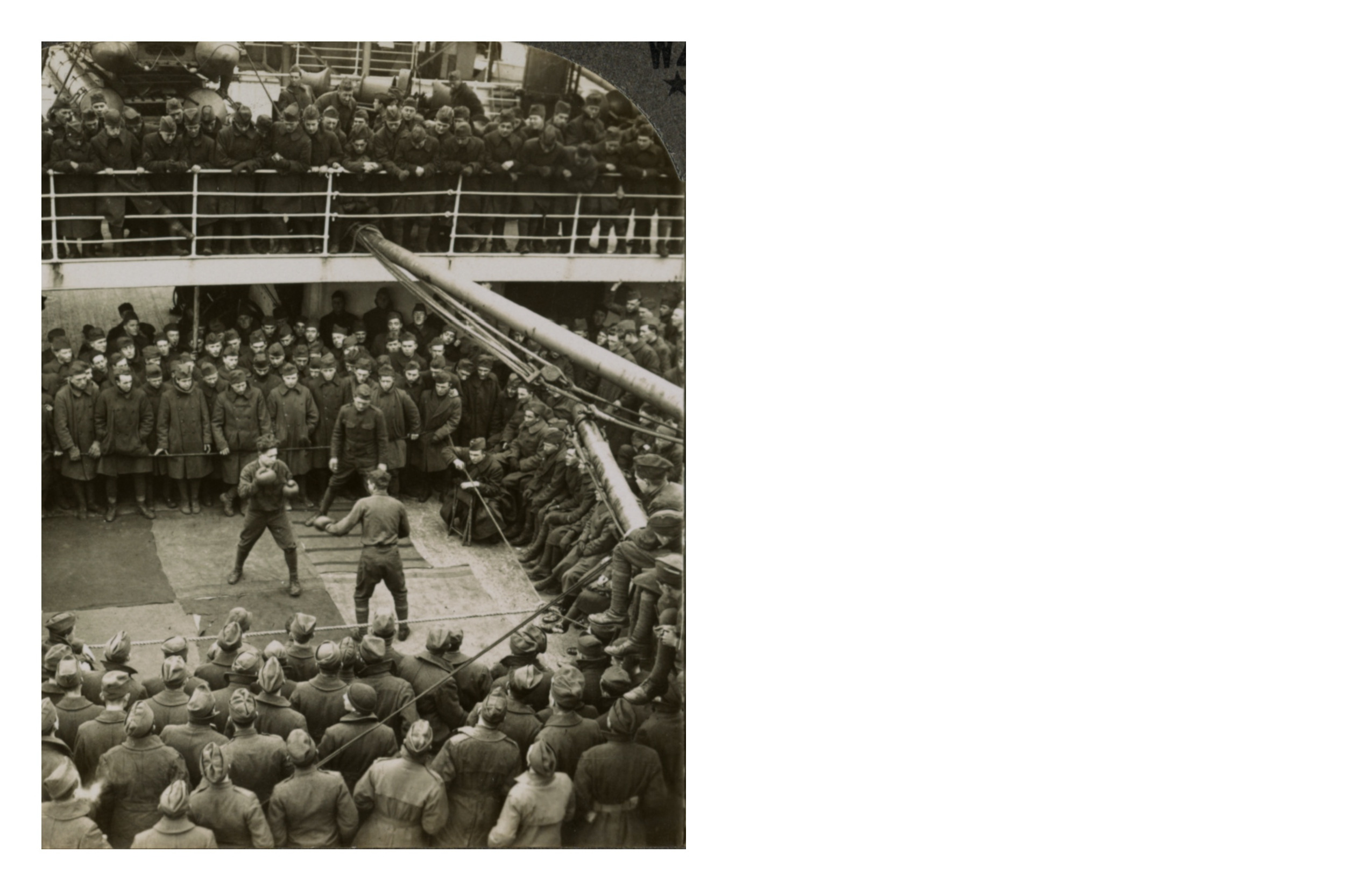June
The June issue of 1923 features images from the collection The World War through the stereoscope , a series of photographs intended for display through a specially designed 3D viewer. The collection was published by Keystone View Company, which also manufactured the viewer. The viewer appears to be a pretty ungainly device; UMass Amherst displays one, along with two of the three volumes of this World War I collection, in its special collections.
There have been many attempts to commercialize stereoscopic technology over the years. The approach differs, but the fundamentals are the same: two slightly different images, presented independently to the left and right eyes, can be combined to simulate the effect of depth. Keystone, the company behind these photographs, at this point held the largest collection of stereoscopic images in the world. Its efforts to market their use for education, among other purposes, come across pretty strongly in the “guidebook” that originally accompanied the 300 photographs. The quote presented at the beginning of this issue is from just one of the expert testimonials, including an “appreciative statement” by noted stereoscope enthusiast Oliver Wendell Holmes.
The scans used in the June issue are hosted by the Library of Congress, which holds a complete collection of the images.
If these stereoscopic images pique your interest, there are plenty more where that came from. The Robert N. Dennis collection at the New York Public Library hosts over 70,000 stereoscopic views (with over 40,000) available digitally; most of them aren’t precisely enough dated to be included in this zine, but they are fascinating in their own right.
Diving even further down that rabbit hole: in 2012, NYPL Labs—an amazing group that operated out of the New York Public Library until 2016—built the Stereogranimator, a tool to simulate the 3D effect of the stereographs with animated GIFs that toggle quickly between the two images.
Download this issue as pdf.